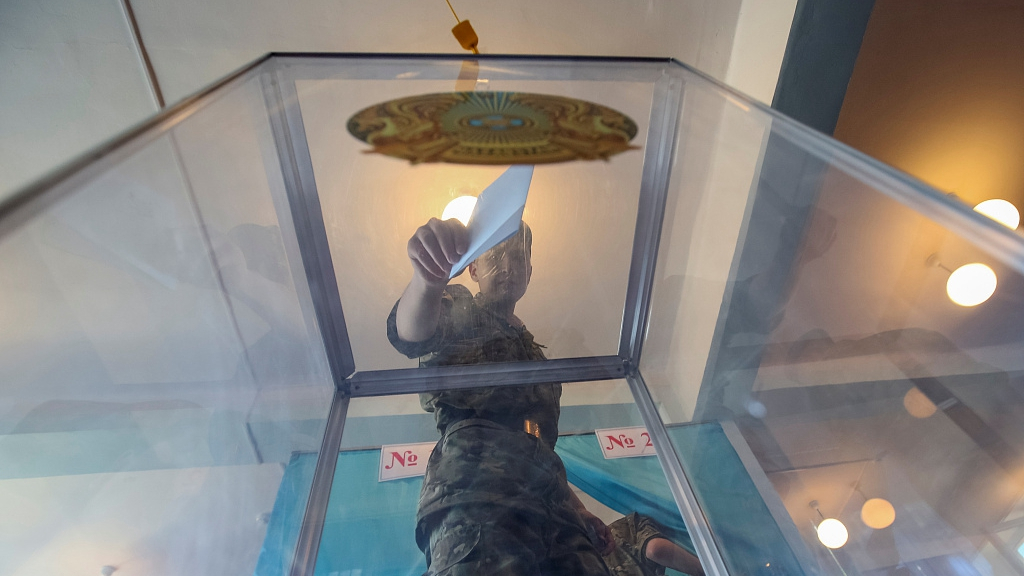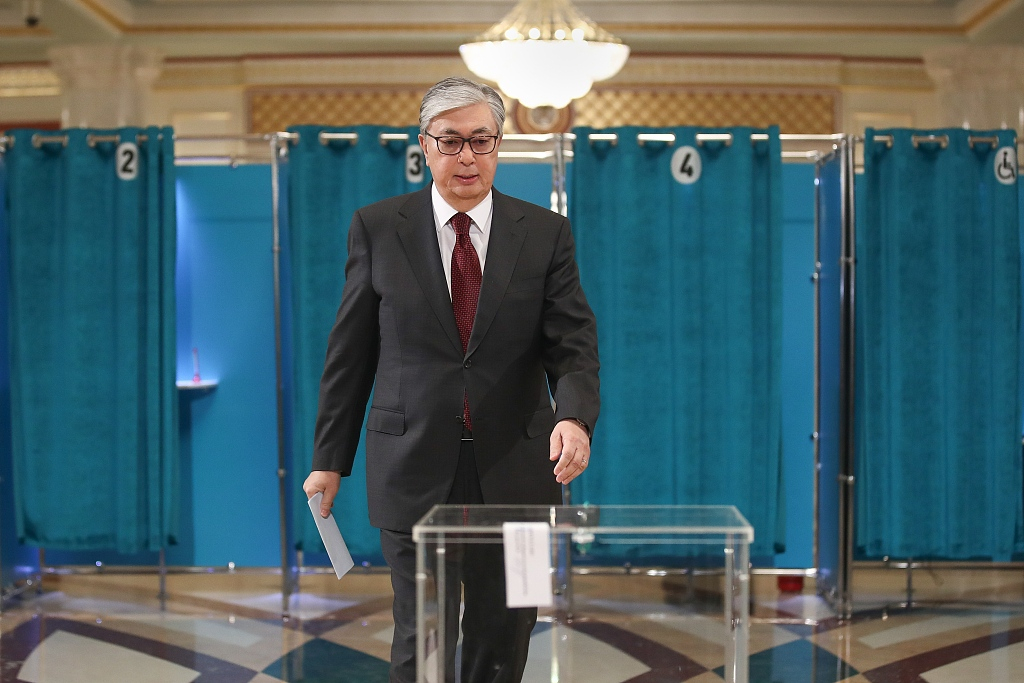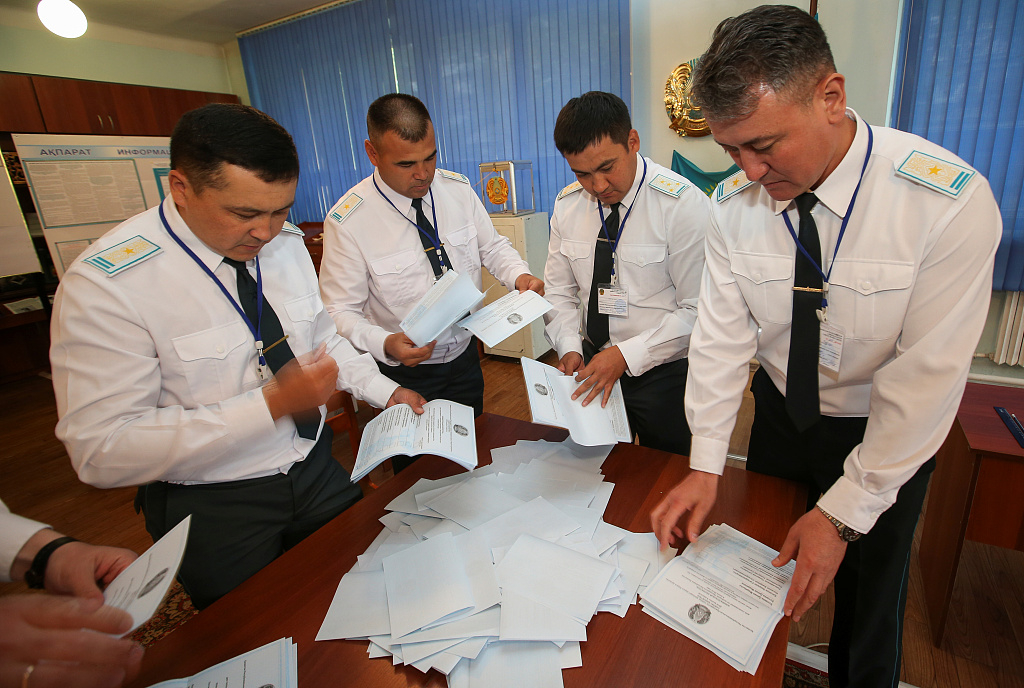

Editor's Note: Zhang Ning is a research fellow at the Institute of Russian, Eastern European and Central Asian Studies, Chinese Academy of Social Sciences. The opinion reflects the author's opinions, and not necessarily the views of CGTN.
Kazakhstan is electing a new president on Sunday. For the first time since the country's independence, long-serving leader Nursultan Nazarbayev has not put forward his candidacy.
Nazarbayev resigned in March after nearly 30 years in office and he positioned Kassym-Jomart Tokayev as the country's interim president. The longtime Nazarbayev loyalist is widely expected to win easily. On his campaign trail, Tokayev reiterated Nazarbayev's message that continuity, not change, is the country's political future.
Sunday's election is the first step of Nazarbayev's power transfer. Although Tokayev was appointed as the country's interim president, he is believed to be a transitional figure. Nazarbayev is still monitoring his cadre for the best pick of his successor. Judging from the current situation, the country is highly likely to see an actual power transfer from 2024 to 2025 after the newly-elected president completes his/her term.
After the presidential election, Kazakhstan may immediately launch an early election in the lower house of the parliament. While attempting to secure its absolute control over the parliament, the ruling Nur Otan party, as many observers believe, will rearrange the power distribution in the legislative body and allocate some places for those from the administrative system.

Kassym-Jomart Tokayev casts his vote in the 2019 Kazakh presidential election, June 9, 2019. /VCG Photo
As the first and perhaps the most important step of the power transfer, the presidential election is being closely watched by Kazakh politicians and the rest of the world. How the election is shaping Kazakhstan's future politics can be analyzed from the following.
To begin with, the turnout rate is an indicator of the extent to which the Kazakh public is interested in the election. An analysis of the voters gives a glimpse of the ruling party's capability of motivating the society and the distribution of supporters for different political forces.
Tokayev's approval rate is another focus of attention. The interim president's victory is almost certain. Considering Nazarbayev's previous approval rate, which has never dipped below 80 percent, Tokayev is expected to win the support from 70 percent to 85 percent voters. The figure is believed to be high enough to make Tokayev the next president but at the same time is unlikely to surpass Nazarbayev's previous records.
Another candidate Amirzhan Kosanov's performance is being closely watched as well. As a leading figure from the opposition camp, his popularity rate, to some degree, suggests the extent to which the public is dissatisfied with the Kazakhstani authority.
Dania Yespayeva, who has been thrust into the media limelight, is the first female presidential candidate in the country's history. Her popularity indicates the public's attitude toward a female president. This is significant for Nazarbayev's daughter Dariga as she may run for president in the future.
At present, all candidates attach great importance to the following three agendas: Societal issues, fighting against corruption, and Kazakhstan's independence. Societal issues – people's income, employment, welfare, migration, etc. – are closely connected to the lives of voters. The anti-graft campaign is a powerful weapon to win votes and candidates are sparing no effort in collecting information about their rivals' anti-corruption attempts.

Officers of a local election committee count votes in Almaty, Kazakhstan, June 9, 2019. /VCG Photo
The emphasis on Kazakhstan's independence is the trump card of unification. While advocating for diversified diplomatic policies, the candidates also stressed the importance of protecting Kazakh language and culture.
For future leadership, challenges lie ahead. First of all, it is a tough task to improve the public's welfare. Reforms in healthcare, pension, taxation, land use, and personnel management are of vital importance in the next five years.
How to retain the middle class is another challenge. With shrinking incomes, an increasing number of middle-class families in Kazakhstan are migrating to Europe, further widening the talent gap in the country.
Moreover, the new leadership will have to put more efforts in innovation. At present, raw material mining and export is still the major source of the oil-rich former Soviet republic's financial revenues. How to revive the old industries and boost high-tech development is a challenge for Kazakhstan.
(If you want to contribute and have specific expertise, please contact us at opinions@cgtn.com)

Copyright © 2018 CGTN. Beijing ICP prepared NO.16065310-3
Copyright © 2018 CGTN. Beijing ICP prepared NO.16065310-3